When it comes to layering serums, there's one simple truth that cuts through all the noise: apply your products from the thinnest consistency to the thickest. This single rule is your key to making sure every powerful ingredient can actually reach your skin without being blocked by heavier formulas.
Your Essential Guide to Serum Layering
Welcome to the real-world guide on getting serum layering right. The global obsession with these little bottles of magic isn't just a fleeting trend; it’s a sign that we’re all getting smarter about our skincare. The facial serum market, valued at a whopping USD 5.86 billion, is expected to skyrocket to USD 10.32 billion by 2033. This boom is happening because people are finally realizing that layering concentrated actives, like antioxidants and peptides, is the secret to getting real results.
The core principle—thinnest to thickest—is non-negotiable. Seriously.
Think of your skin like a sponge. A watery, lightweight serum will sink in almost instantly. On the other hand, a richer, oil-based formula is designed to sit closer to the surface, locking in all the goodness underneath. If you apply them in the wrong order, it's like trying to water a plant by pouring water on top of a plastic sheet. The lighter, water-based serum just can't penetrate the oily barrier you've already created.
A Simple Framework for Your Serums
Before you start layering, you need to know what you’re working with. Getting your product lineup right is the first step, and if you're feeling a bit lost, spending some time on finding your perfect facial serum can make all the difference.
Key Takeaway: The texture of a serum dictates its place in your routine. This isn't about brand or price, but about simple physics and how liquids are absorbed.
To make this crystal clear, I've put together a quick reference table. This is how you can start to organize your serums based on their texture.
The Fundamental Rule of Serum Layering
| Application Step | Serum Type/Consistency | Example Ingredients |
|---|---|---|
| First Layer | Water-Based / Gels | Hyaluronic Acid, Vitamin C (L-Ascorbic Acid) |
| Second Layer | Lotions / Emulsions | Niacinamide, Peptides |
| Final Layer | Light Oils / Anhydrous | Squalane, Retinoids in Oil |
This simple chart is your new best friend for building a routine that works.
Many of us look to the sophisticated, multi-step routines perfected by top beauty innovators for inspiration. You can explore the best Japanese skincare brands for glowing skin and you'll see how this exact layering philosophy is at the heart of their approach. Once you grasp this foundational knowledge, you'll have the confidence to build a routine that truly delivers for your skin.
Why the Order of Your Serums Really Matters
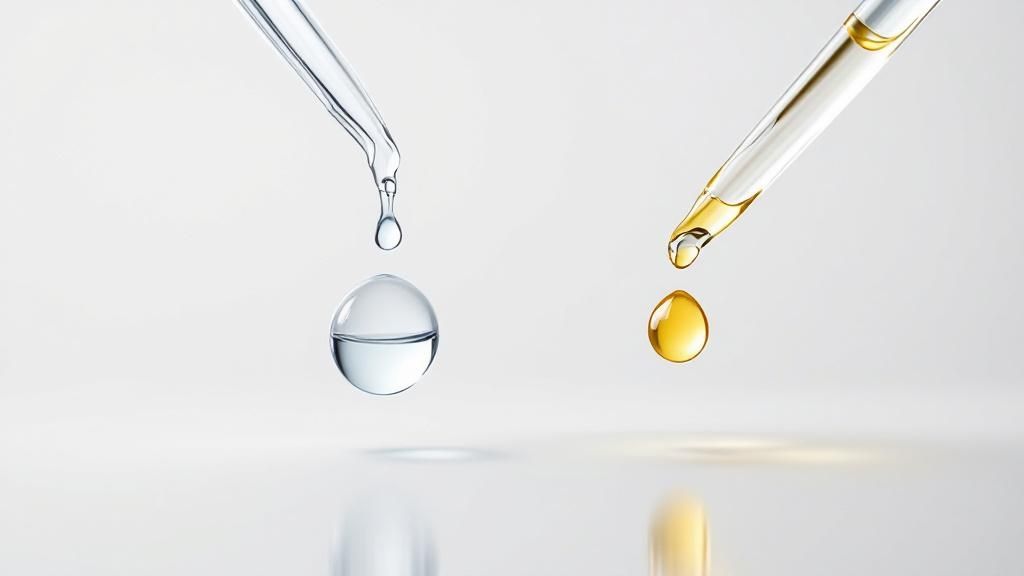 If you've ever wondered if the order you apply your serums actually makes a difference, the answer is a resounding yes. Getting this right is what separates just going through the motions from making smart, effective choices for your skin. It all comes down to some basic science: molecular size and product formulation.
If you've ever wondered if the order you apply your serums actually makes a difference, the answer is a resounding yes. Getting this right is what separates just going through the motions from making smart, effective choices for your skin. It all comes down to some basic science: molecular size and product formulation.
Think about your lightweight, water-based serums, like a hyaluronic acid or a classic Vitamin C serum. These are built with smaller molecules designed to dive deep into the skin where they do their most important work. For that to happen, they need a clear runway.
Now, imagine slathering on a thick, oil-based serum first. Those larger molecules are fantastic for locking in moisture, but they also create a seal on your skin's surface. This seal effectively becomes a roadblock, preventing your lighter serums from ever getting where they need to go. You're essentially wasting a great product. This is why mastering your serum order is a non-negotiable for a routine that delivers real results.
pH and Molecular Weight
Beyond just texture, the science gets even more specific when you factor in ingredient stability. Some active ingredients are notoriously fussy about the environment they're in. L-Ascorbic Acid, a really potent form of Vitamin C, is a perfect example. It needs a low-pH environment on the skin to stay stable and do its job. If you apply it after a product with a higher pH, you could be neutralizing its power before it even has a chance to work. Understanding the impact of Vitamin C for a brighter skin is crucial to getting the most out of it.
This growing awareness among skincare lovers is fueling huge growth in the facial serum market, which is now valued at around USD 5.9 billion. It's telling that water-based formulas make up over 45.2% of that market—we clearly love our lightweight, layer-friendly products. As you build out your own routine, you can dive deeper into specific ingredients with resources like our guide to niacinamide.
By respecting the science behind each formula—from its molecular weight to its pH stability—you ensure every drop of your pricey serum is actually doing its job and delivering the results you're paying for.
Building Your AM and PM Serum Routines
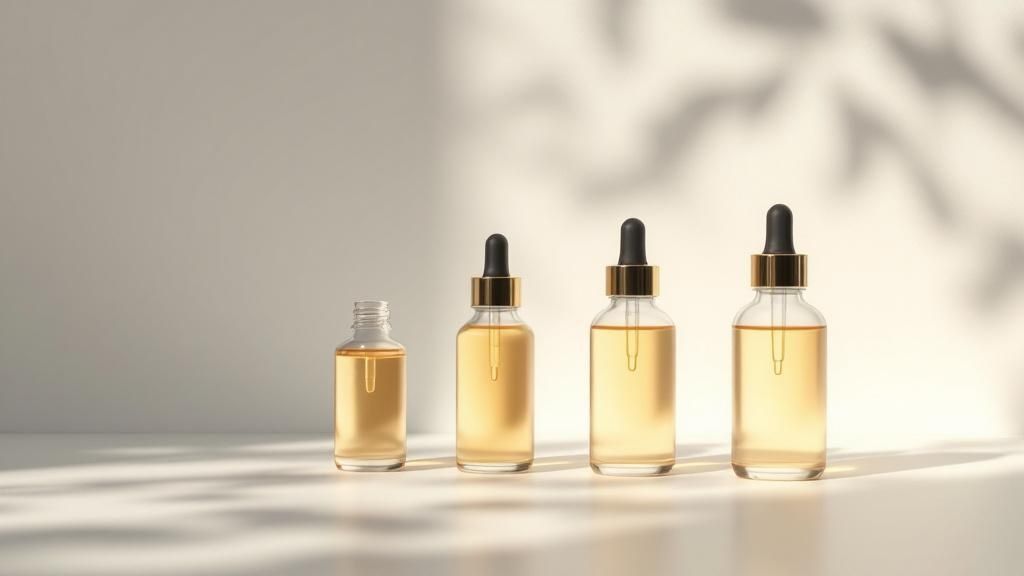
Here's something I see all the time: people using the exact same skincare routine morning and night. While the enthusiasm is great, your AM and PM routines really shouldn't be mirror images of each other. They have completely different jobs.
Think of it this way: your morning routine is your skin's personal bodyguard, focused on protection. Your evening routine, on the other hand, is the specialized repair crew that comes in overnight to treat and rejuvenate. When you learn to layer serums for each specific mission, you'll finally unlock their true power.
In the morning, the goal is simple: arm your skin against the day. You’re fighting off environmental enemies like UV rays and pollution while trying to keep your skin hydrated. This is where antioxidants are your best friend.
Once the sun goes down, the game changes. Your body enters its natural repair cycle, creating the perfect opportunity to bring out the heavy-hitting treatment serums. This is prime time for ingredients that boost cell renewal and collagen production, letting them work their magic without the sun getting in the way.
Crafting Your Morning Protection Routine
A solid morning serum strategy doesn't have to be complicated. In fact, a powerful combo often involves just two key products: a potent antioxidant and a quality hydrator. This simple duo creates the perfect canvas for your sunscreen, which, as we know, is the non-negotiable final step of any AM routine.
-
First Layer (The Shield): On clean, dry skin, start with a Vitamin C serum. Its typically thin, watery consistency means it sinks in fast, delivering a powerful antioxidant punch to neutralize free radical damage from the environment.
-
Second Layer (The Plumper): Give it a minute, then follow up with a hyaluronic acid serum. This one is usually a bit thicker, with a gel-like feel that layers beautifully over the Vitamin C. Its job is to pull moisture into the skin, leaving it looking plump and feeling hydrated all day.
Designing Your Evening Repair Routine
Nighttime is all about treatment and repair. This is your chance to use those game-changing active ingredients—like retinoids and chemical exfoliants—that are best kept away from daylight. You just have to be smart about it to avoid turning your face into an irritated mess.
Here's the golden rule for your PM routine: Never mix retinoids with alpha-hydroxy acids (AHAs) or beta-hydroxy acids (BHAs) on the same night. I've seen it happen too many times. That combination is a fast track to irritation, redness, and a damaged skin barrier. Instead, use them on alternate nights.
Let's walk through a sample evening routine aimed at anti-aging and smoothing out skin texture:
-
First Layer (The Workhorse): On your "retinol night," your retinoid or peptide serum goes on first. These are the engines of your routine, firing up collagen production and speeding up cell turnover.
-
Second Layer (The Peacemaker): Follow that with a niacinamide or ceramide serum. Niacinamide is a fantastic supporting actor; it helps soothe the skin and strengthen your barrier, calming any potential dryness or irritation from the retinoid. This strategic pairing means you get all the amazing benefits without the frustrating side effects.
To make this even clearer, I've put together a quick comparison table showing how these strategies play out for different goals.
AM vs. PM Serum Layering Examples
This table gives you a snapshot of how you might build your morning and evening routines. Notice how the AM routine is always geared toward defense, while the PM routine focuses on targeted treatment.
| Time of Day | Goal | Layer 1 (Thinnest) | Layer 2 (Thicker) | Purpose |
|---|---|---|---|---|
| Morning | Anti-Aging & Brightening | Vitamin C Serum | Hyaluronic Acid Serum | Protect from UV damage, boost collagen, hydrate, and plump. |
| Evening | Anti-Aging & Brightening | Retinoid Serum | Niacinamide Serum | Stimulate cell turnover, reduce fine lines, soothe, and support the skin barrier. |
| Morning | Hydration & Soothing | Hyaluronic Acid Serum | Centella Asiatica Serum | Deeply hydrate the skin, reduce redness, and calm inflammation. |
| Evening | Exfoliation & Texture | Glycolic Acid (AHA) Serum | Peptide Serum | Gently exfoliate dead skin cells, improve texture, and support skin repair. |
Ultimately, a smart skincare routine isn't about using more products—it's about using the right products at the right time. By separating your protective and treatment goals between morning and night, you give each ingredient the best possible environment to deliver real, visible results.
Common Serum Layering Mistakes to Avoid

Even with the best products lined up on your shelf, it’s surprisingly easy to get things wrong when you start layering serums. A few simple missteps can lead to irritated skin, wasted product, and that sinking feeling when you just don't see the results you were hoping for.
One of the most common pitfalls I see is simply rushing the process. If you've ever noticed those annoying little balls of product "pilling" on your skin, it's a sure sign your serums haven't had time to sink in. They're literally just rolling off instead of doing their job. A good rule of thumb? Give each layer at least 60 seconds to fully absorb before moving to the next.
With the global serum market now valued at over USD 4.71 billion, it's clear that complex, multi-step routines are more popular than ever. But this boom also means it's crucial to know what you're doing, because mixing the wrong ingredients can cause more harm than good. For a deeper look at the numbers, you can discover more insights about the skincare serum market on factmr.com.
Overloading on Actives
Another frequent mistake is going overboard with too many powerful active ingredients at once. I get it—it's tempting to throw everything you have at your skin concerns, but this approach often backfires spectacularly.
Key Takeaway: Adopting a "more is more" philosophy with active serums can easily compromise your skin barrier, leading to redness, sensitivity, and even breakouts. It's always better to be strategic than aggressive.
For instance, piling on a retinoid, a potent vitamin C serum, and a strong AHA/BHA exfoliant all in the same routine is practically a recipe for irritation. A much smarter approach is to alternate these powerhouse ingredients. The delicate, thoughtful approach seen in Japanese skincare is a great source of inspiration here; you can unlock Japanese beauty secrets for radiant skin to learn how they masterfully prioritize balance.
Here’s a simple way to think about it:
- What Not To Do: Mixing retinol and certain forms of vitamin C in the same application.
- What To Do Instead: Use your vitamin C in the morning to provide antioxidant protection against the day's environmental stressors, and save your retinoid for your nighttime routine to focus on repair and renewal.
Pro Tips for Maximum Serum Absorption
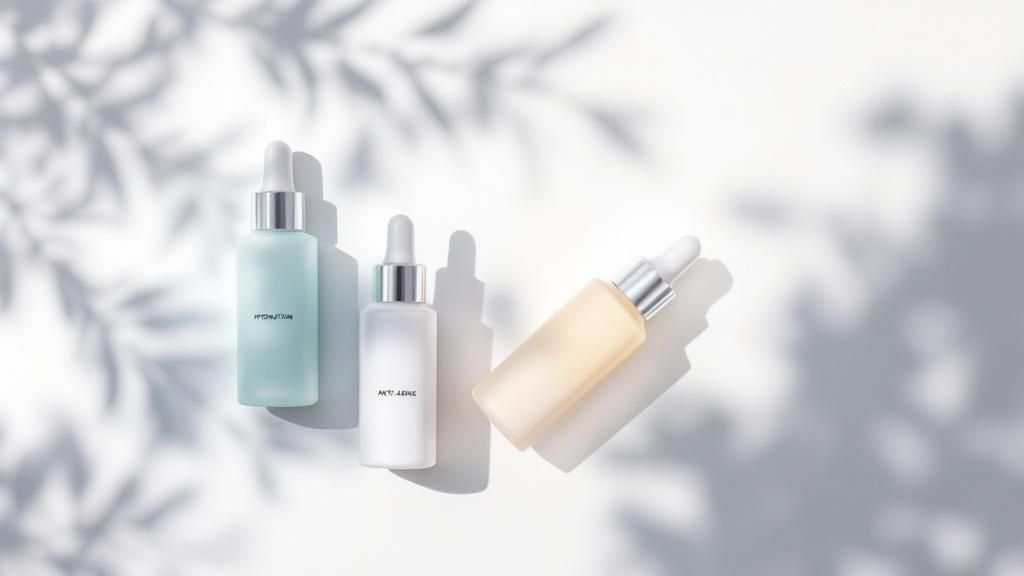
So, you've nailed the correct order for your serums. That’s a huge step! But if you really want to get the most out of every single drop, a few simple, pro-level tweaks can make a world of difference. After all, you’re investing in these products, so let’s make sure your skin is actually getting all the benefits.
One of the easiest and most effective tricks I've learned is to apply serums to slightly damp skin. Don't wait for your face to completely dry after cleansing and toning. While it's still a little moist, go right in with your first water-based serum. Think of damp skin as a sponge—it's far more permeable and ready to soak up hydration and active ingredients, pulling them deeper into the skin.
Perfecting Your Application Technique
How you put your serum on your face matters just as much as what’s in the bottle. It's easy to just quickly rub products in, but that can cause unnecessary friction and tug on delicate skin over time. A gentler approach is always better.
Have you tried the press and pat technique? It’s a favorite among estheticians for a good reason. Just warm a few drops of serum between your fingertips, gently press it onto your skin, and then follow up with a light patting motion. This helps you get even coverage without any pulling.
Key Takeaway: The time you wait between layers is crucial. There's no magic number, but a good rule of thumb is to wait until each layer no longer feels tacky to the touch. This could be anywhere from 30 seconds to a couple of minutes. This pause prevents products from pilling and gives each one its own chance to absorb properly.
Finally, remember that you can't apply serums effectively to a canvas that isn't prepped. Think of weekly exfoliation as a non-negotiable part of your routine. By clearing away that buildup of dead skin cells, you're paving a clear path for your serums to do their job. Without it, even the priciest products are just sitting on the surface, unable to penetrate.
Mastering these little techniques is fundamental, much like following the essential Japanese skincare steps to radiant skin, which really emphasize a thoughtful, deliberate application.
Common Questions About Layering Serums
Jumping into the world of serum layering can feel a bit like a chemistry experiment, and it's totally normal to have a few questions. Let's clear up some of the most common ones so you can build your routine like a pro.
The first thing everyone asks is: how many serums is too many? It's so tempting to slather on every "holy grail" product you own, but you’ll get better results by showing some restraint. I always recommend sticking to two or three serums per routine. This gives each product enough space to absorb properly without overwhelming your skin or causing that dreaded "pilling," where products ball up instead of sinking in.
Another popular question is whether it's okay to mix and match serums from different brands. The answer is a resounding yes! Good skincare is about the ingredients that work for you, not the logo on the bottle. As long as the formulas play well together and you stick to the thinnest-to-thickest rule, feel free to pick and choose your favorites from any line.
What to Do if Your Skin Gets Irritated
So, what happens if you start a new layering routine and your skin throws a fit with redness or irritation? The very first thing to do is stop. Just stop. Pare your routine back to the absolute basics—a gentle cleanser and a simple moisturizer—for a few days to let things calm down.
Once your skin is back to normal, you'll need to reintroduce your serums one at a time to pinpoint the culprit. If your skin is naturally on the delicate side, you might want to explore some of the top Japanese skincare for sensitive skin, which is known for its gentle yet effective formulations.
A great rule of thumb is to wait until a serum no longer feels tacky before applying the next layer. This simple touch test is more practical than watching the clock and ensures each product has had a chance to absorb, preventing pilling and maximizing results. This wait can be anywhere from 30 seconds to a few minutes depending on the product’s consistency.
Ready to discover your next holy grail product? Explore the curated collection of premium Japanese skincare at Buy Me Japan and build a routine that truly delivers. Shop now.
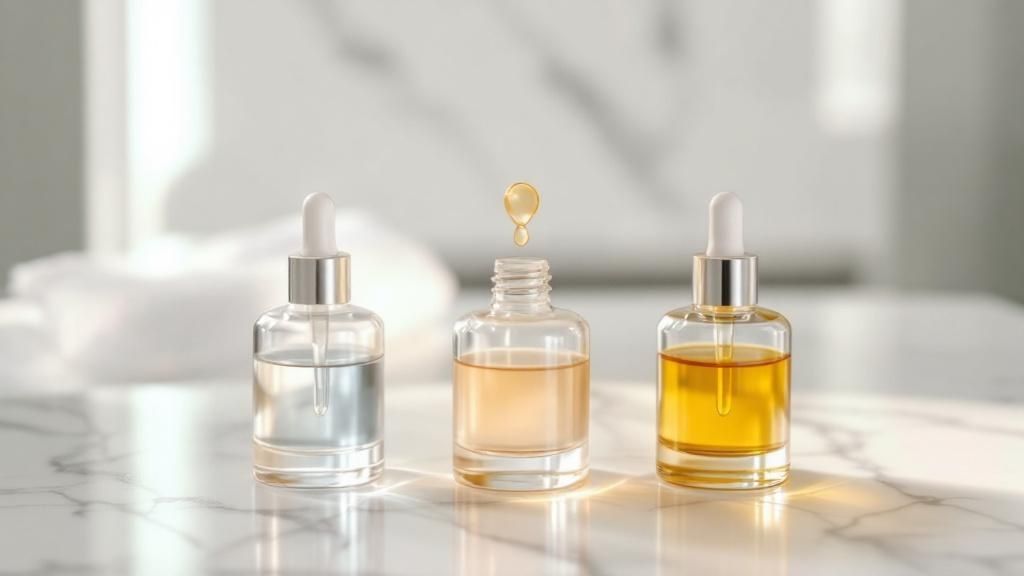
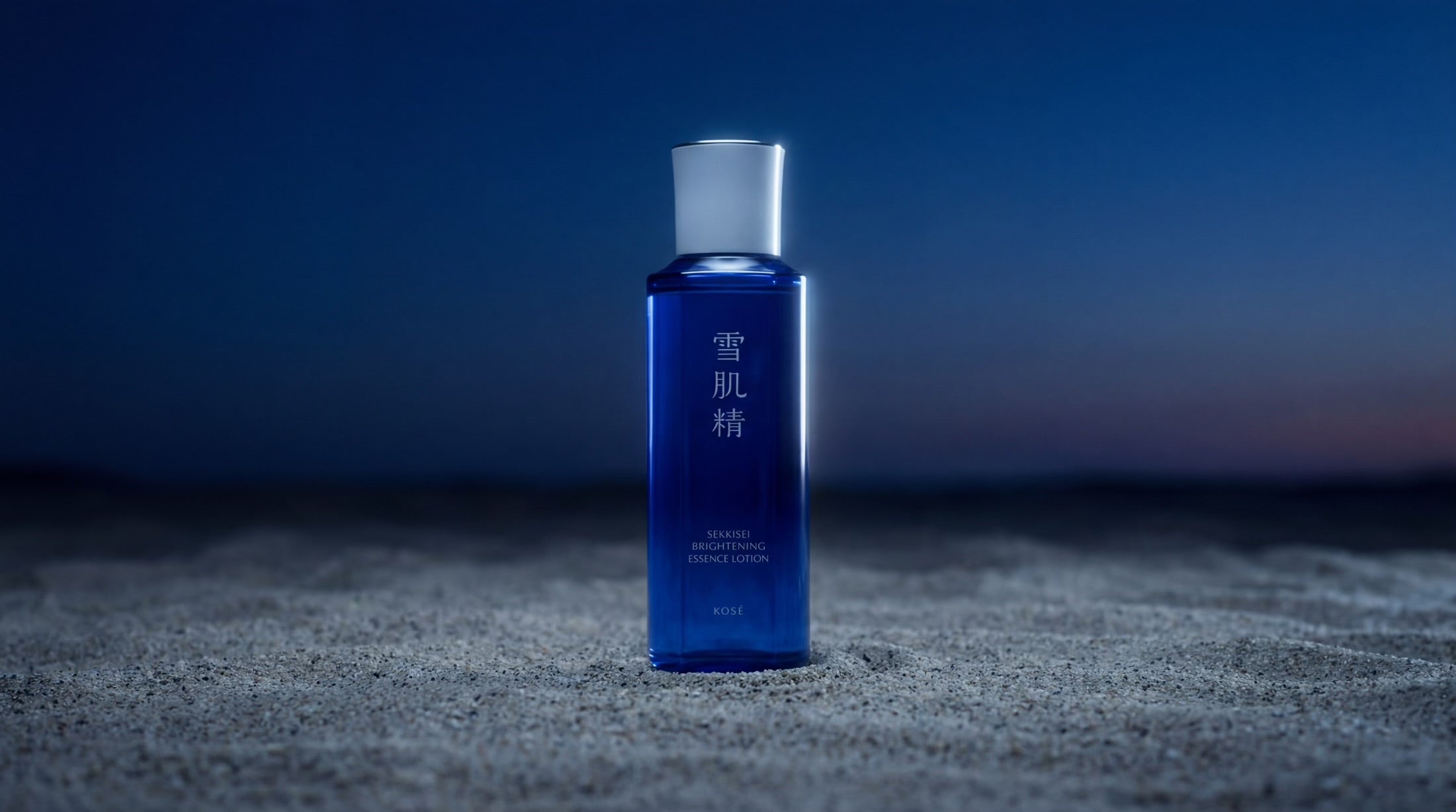
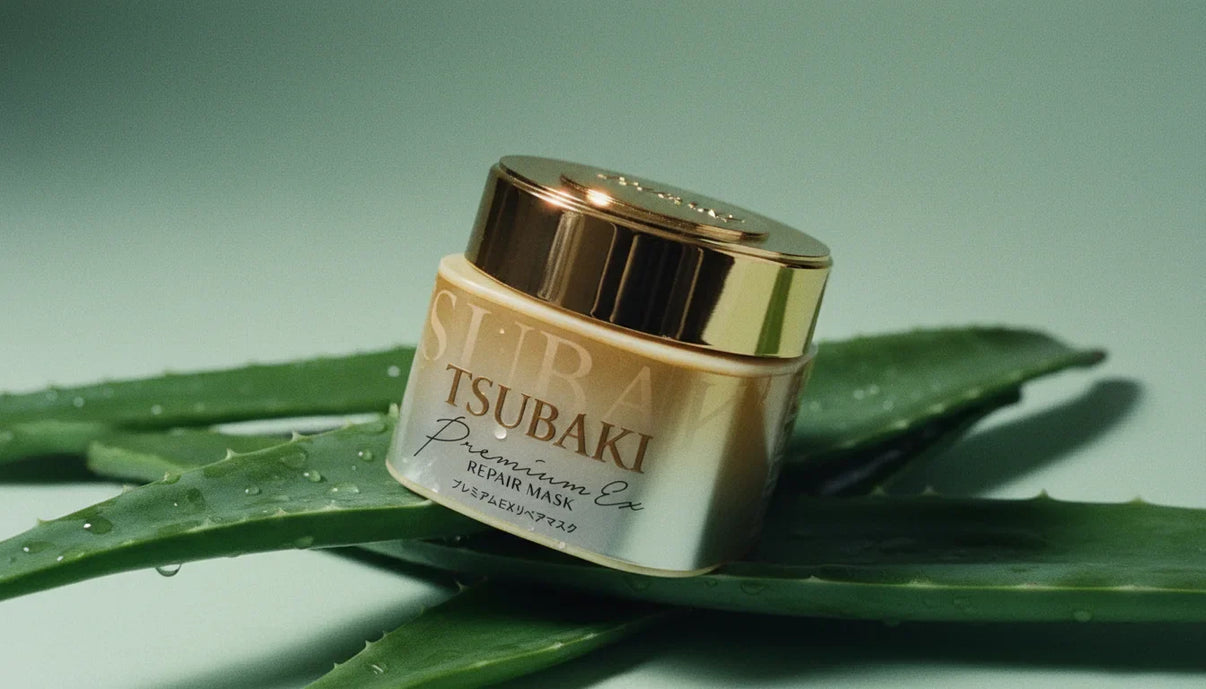

Share:
Japan Hair Styling Guide for Home Stylists
Your Guide to Japanese Face Massage at Home